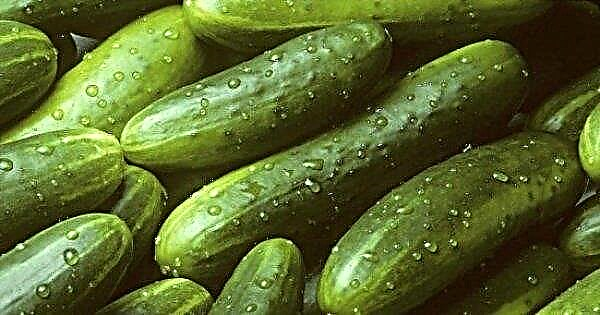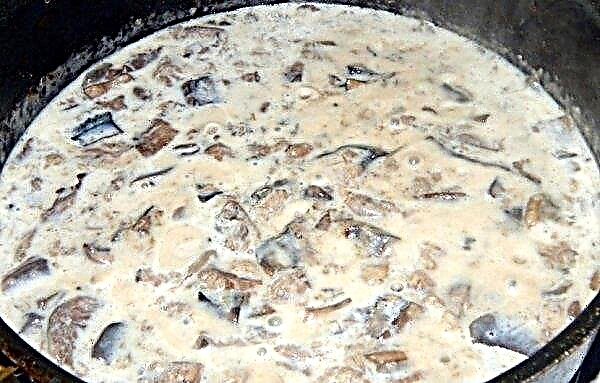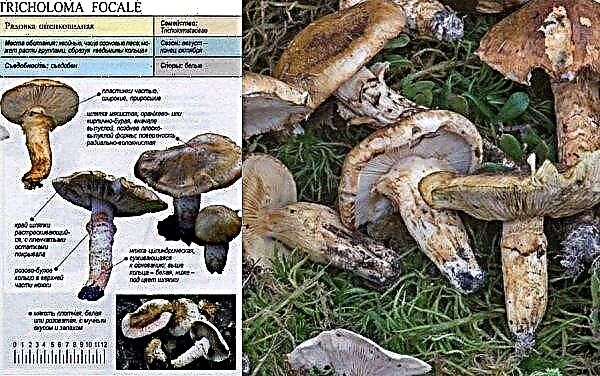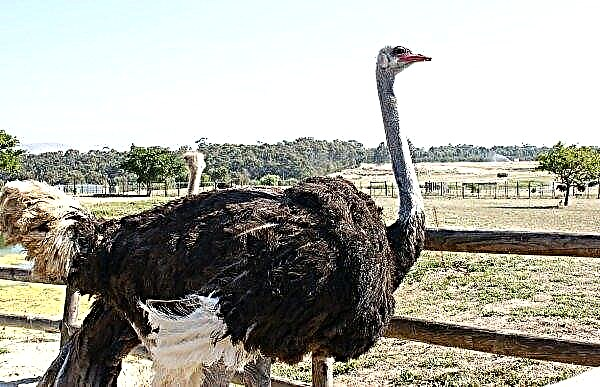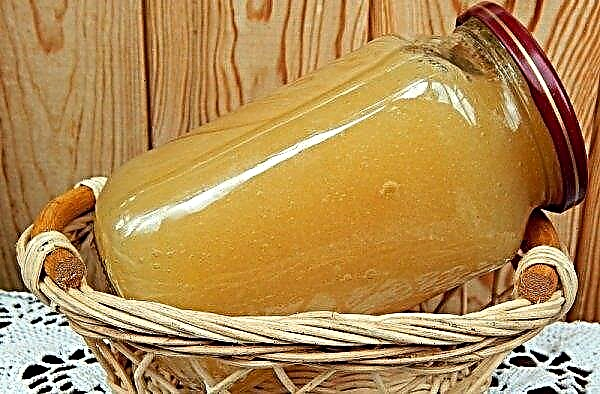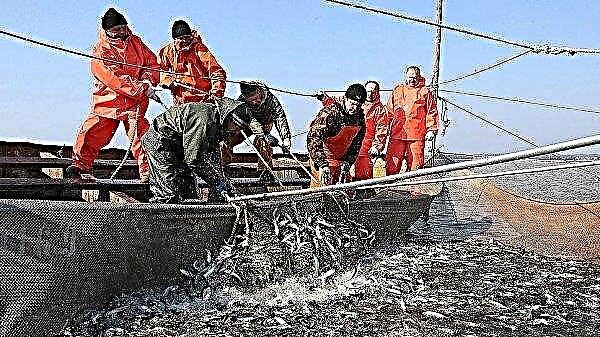Each gardener sooner or later asks the question: "Do I need to change the soil in the greenhouse"? Since the greenhouse has ideal conditions for the spread of fungal infections and pests, there is no replacement of the cultivated crop due to the small area of soil used, it is necessary to take measures to improve it regularly. This will allow you to get stably high yields and avoid plant death from infections and pests.
Why change the earth in a greenhouse?
When using a greenhouse without replacing the soil for several years, the fertility of the soil layer may decrease. This is due to the penetration of pathogenic bacteria into the greenhouse, which are brought in with clothes and shoes. Due to the constant temperature and humidity in the greenhouse, they do not die and multiply rapidly, provoking the development of pathogens of various plant diseases and their pests. Also, soil replacement is necessary in a small greenhouse, due to the inability to alternate crops.
Important! Improving the soil will help the cultivation of green manure - radish, rapeseed and mustard, etc., since they inhibit the growth of weeds and destroy pests.
However, the same plants are most often grown in a greenhouse, so the soil is depleted over time. The soil in the greenhouse becomes too dense, loses its nutritional properties, water and air permeability. In the greenhouse there is a rapid spread of weeds. Under such conditions, plants grow worse, get sick and give less yield.

How to improve the land in the greenhouse in the fall?
Proper soil preparation for the new season, which is best done in the fall, will help increase soil fertility and revitalize it. It is important that the air temperature is + 10 ° С ... + 15 ° С and low humidity. This will help prepare the ground for the new season as efficiently as possible. It is important to replenish the soil after its disinfection.
Preparation of the soil cover for the new crop includes the following steps:
- dusting with wood ash;
- fertilizing, the type of which depends on the choice of the crop;
- digging and loosening the soil.
Earth Change Frequency
To effectively combat late blight and other infectious lesions, in the greenhouse it is necessary to "cut off" the old earth and fill up new soil in its place. It is recommended to change the soil in the greenhouse once every 2 years. This is due to the penetration into the greenhouse of pathogens that are brought in with clothes and shoes. Since the greenhouse has favorable conditions, they quickly multiply and spread, which leads to low yields or plant death.

Before updating the land, it is necessary to remove the remains of old plants and weeds. They remove 5-10 cm of soil, but if it is severely affected by pests, it is recommended to change 20-30 cm of soil. At the same time, it is not necessary to buy a special soil mixture, and the land can be prepared independently. Such soil should consist of 50% peat, 20% humus or compost, 10% river sand and 10% turf land.
Did you know? For the first time, organic fertilizers to improve the quality and fertility of the earth began to be used 3 thousand years ago, and the first record about them dates back to the 1st century A.D. and belongs to the scientist and landowner Columella.
Methods of cultivating and improving soil fertility in a greenhouse
After harvesting, various pests and microorganisms can start in the soil, so before the next season it is necessary to disinfect in the greenhouse. This procedure will protect the crop from parasites and diseases.
There are three methods of soil treatment:
- Biological. It is the safest, and also allows you to enrich the soil, destroy pathogens. For this, the soil is cultivated with “Azotofit”, “Trichodermin”, “Fitosporin” or other preparations, after which siderates are planted - plants used to improve the structure of the soil.

- Chemical. Disinfection is carried out in three stages: first bleach is scattered at the rate of 100 g per 1 m², then it is poured with a potassium permanganate solution, to prepare which it will be necessary to dilute 5 g of the chemical in 1 liter of water and dig up the soil.

- Thermal. It means heating the soil with a special heat generator up to 700 degrees. Such equipment is expensive, so the procedure can be replaced by watering the earth with boiling water and then covering it with a black thick film. After a day, the coating is removed, and the soil is loosened. The procedure should be repeated at least three times.
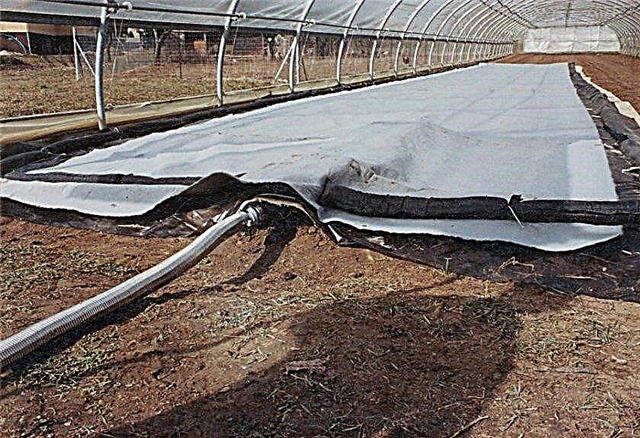
Step-by-step instructions for replacing land
Change of soil in the greenhouse includes the following steps:
- Harvesting plant debris.
- Removing old soil around the entire perimeter of the greenhouse to a depth of 10 cm, and if infection is significant, then by 20-30 cm.
- Processing contaminated soil with bleach and 10% solution of copper sulfate.
- Laying new, “purchased” or home-made soil.
- The application of dry bleach based on the calculation: 4 kg per 1 m³.
- Fertilizing, depending on the crop you plan to grow.
- Fumigation with lump sulfur or sulfur drafts.
Did you know? For the first time, chemical fertilizers began to be used in the second half of the 19th century.
Features of soil improvement in a polycarbonate greenhouse
Since polycarbonate-coated greenhouses keep moisture and temperature inside the building well, in such a greenhouse the risk of developing various infections and pests multiplies.
Video: Replacing the soil in the greenhouse
The soil in such a greenhouse requires particularly careful care with a mandatory replacement every 2 years, and in case of severe damage - it must be changed every year. At the same time, it is recommended to remove 30 cm of land, which will completely get rid of pests and microorganisms.
Important! To naturally fertilize the soil, legumes, such as beans, peas, or beans, can be grown on it, as they saturate the earth with nitrogen.
Replacing the soil in the greenhouse is necessary because it allows you to get rid of pathogens and pests that accumulate in the soil during the growing of plants in the greenhouse. This procedure will help improve plant growth and increase yield. A soil change is especially necessary in a polycarbonate greenhouse, since such a coating provides stable, favorable humidity and temperature, as a result of which infections spread more quickly.




